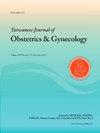引产失败的危险因素:在一个单一的,三级,围产期护理中心的回顾性研究
IF 2.2
4区 医学
Q2 OBSTETRICS & GYNECOLOGY
引用次数: 0
摘要
目的了解人工引产失败的发生率及相关危险因素。材料与方法对2020年1月至2023年12月在我院行人工晶状体手术、妊娠34周后分娩的女性进行回顾性病例对照研究(n = 1541)。人工晶状体植入失败被定义为由于任何原因进行剖宫产。对照组为人工晶状体术后成功阴道分娩,包括产钳和真空分娩。初产和多产妇女都包括在研究中。我们通过多变量logistic回归分析确定了人工晶状体失败的相关危险因素。结果研究期间,在我院分娩的4244例产妇中有1541例(36.3%)行人工晶状体植入术。其中326例女性人工晶状体失败,估计发生率为21.2%(95%可信区间[CI]: 19.1% - 23.3%)。多变量分析显示,每增加1年,老年人(调整优势比[aOR] = 1.07, 95% CI: 1.04-1.11, P <;0.001),初产(aOR = 0.24 95% CI: 0.16-0.35, P <;0.001),使用辅助生殖技术受孕(aOR = 1.45 95% CI: 1.06-2.00, P = 0.021),出生体重增加(aOR = 1.05,每增加100 g, 95% CI: 1.01-1.65, P = 0.023),妊娠高血压疾病(aOR = 2.53, 95% CI: 1.80-3.56, P <;0.001),诱导前较低的简化Bishop评分(每增加1分aOR = 0.70, 95% CI: 0.61-0.80 P <;0.001)和未使用硬膜外麻醉(aOR = 0.42, 95% CI: 0.31-0.57, P <;0.001)与人工晶状体失败独立相关。结论sage、初产、受孕方式、出生体重、HDPs和简化Bishop评分可作为人工晶状体失败的预测因素。本文章由计算机程序翻译,如有差异,请以英文原文为准。
Risk factors for failed induction of labor: A retrospective study in a single, tertiary, perinatal-care center
Objective
To estimate the incidence and associated risk factors of failed induction of labor (IOL).
Materials and methods
A retrospective, case–control study was conducted on a cohort of women who underwent IOL from January 2020 to December 2023 and delivered after 34 weeks of gestation at our hospital (n = 1541). Failed IOL was defined as delivering with a cesarean section for any reason. The control group consisted of successful vaginal deliveries, including forceps and vacuum deliveries after IOL. Both primiparous and multiparous women were included in the study. We identified associated risk factors of failed IOL via multivariable logistic regression analysis.
Results
During the study period, 1541 of 4244 women (36.3 %) who delivered at our hospital underwent IOL. Among them, 326 women had a failed IOL, an estimated incidence of 21.2 % (95 % confidence interval [CI]: 19.1 %–23.3 %). The multivariable analysis revealed that older age (adjusted odds ratio [aOR] = 1.07 for each 1-year increase, 95 % CI: 1.04–1.11, P < 0.001), primiparity (aOR = 0.24 95 % CI: 0.16–0.35, P < 0.001), conception by using assisted reproductive technology (aOR = 1.45 95 % CI: 1.06–2.00, P = 0.021) larger birth weight (aOR = 1.05 for each 100 g increase, 95 % CI: 1.01–1.65, P = 0.023), hypertensive disorders of pregnancy (HDPs) (aOR = 2.53, 95 % CI: 1.80–3.56, P < 0.001), the lower simplified Bishop score before induction (aOR = 0.70 for each 1-point increase, 95 % CI: 0.61–0.80 P < 0.001), and the use of no epidural anesthesia (aOR = 0.42, 95 % CI: 0.31–0.57, P < 0.001) were independently associated with failed IOL.
Conclusions
Age, primiparity, method of conception, birth weight, HDPs, and simplified Bishop score should be considered as the predictor of failed IOL.
求助全文
通过发布文献求助,成功后即可免费获取论文全文。
去求助
来源期刊

Taiwanese Journal of Obstetrics & Gynecology
OBSTETRICS & GYNECOLOGY-
CiteScore
3.60
自引率
23.80%
发文量
207
审稿时长
4-8 weeks
期刊介绍:
Taiwanese Journal of Obstetrics and Gynecology is a peer-reviewed journal and open access publishing editorials, reviews, original articles, short communications, case reports, research letters, correspondence and letters to the editor in the field of obstetrics and gynecology.
The aims of the journal are to:
1.Publish cutting-edge, innovative and topical research that addresses screening, diagnosis, management and care in women''s health
2.Deliver evidence-based information
3.Promote the sharing of clinical experience
4.Address women-related health promotion
The journal provides comprehensive coverage of topics in obstetrics & gynecology and women''s health including maternal-fetal medicine, reproductive endocrinology/infertility, and gynecologic oncology. Taiwan Association of Obstetrics and Gynecology.
 求助内容:
求助内容: 应助结果提醒方式:
应助结果提醒方式:


